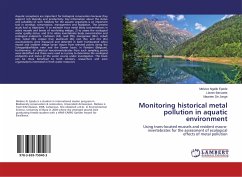
Bacteriophage Applications - Historical Perspective and Future Potential

PAYBACK Punkte
20 °P sammeln!
This book explores key applications of phage biotechnology and reviews recent advances in phage display technologies. The applications covered were selected on the basis of their significance and representativeness in the field.The small size and enormous diversity of bacteriophages make them ideal candidates for numerous applications across many industries. Since the discovery of phages and the advent of phage display systems, considerable attention has been focused on the development of novel therapeutic and industrial applications. Recent studies combine the genomic flexibility of phages wi...
This book explores key applications of phage biotechnology and reviews recent advances in phage display technologies. The applications covered were selected on the basis of their significance and representativeness in the field.
The small size and enormous diversity of bacteriophages make them ideal candidates for numerous applications across many industries. Since the discovery of phages and the advent of phage display systems, considerable attention has been focused on the development of novel therapeutic and industrial applications. Recent studies combine the genomic flexibility of phages with phage display systems in order to generate modified phages for targeted delivery.
The small size and enormous diversity of bacteriophages make them ideal candidates for numerous applications across many industries. Since the discovery of phages and the advent of phage display systems, considerable attention has been focused on the development of novel therapeutic and industrial applications. Recent studies combine the genomic flexibility of phages with phage display systems in order to generate modified phages for targeted delivery.












